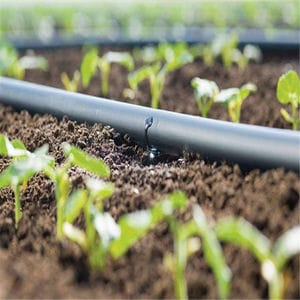Solar dryer in Kenya is used in drying vegetables, fruits and meat products. Drying is a crucial process for preserving agricultural products, especially in developing countries like Kenya.
Open sun drying is the most common method used for this purpose, but it has several drawbacks. The introduction of solar driers can significantly reduce crop losses and improve the quality of the dried crop, compared to the traditional method of sun or shade drying.
Types 0f materials for solar dryer in Kenya
- wooden frame solar dryer in Kenya
- Metallic frame solar dryer in Kenya
- Ppr frame solar dryer
- Polythene
- Insect nets
- Profiles and tapping screws
Advantages of Solar Driers:
- Solar driers are affordable to many farmers and do not require any electrical power to function, making them ideal for use in remote areas.
- Solar driers use a Fresnel lens to capture solar energy and concentrate the heat on the crops placed in the closed chamber, making them faster and more efficient than conventional drying techniques.
- Solar drying is safer, more hygienic, and economical compared to other methods of food preservation.
Different Types of Solar Driers:
Solar driers in Kenya can be classified into three distinct categories depending on the mode of heat transfer from the sun to the crop; direct mode, indirect mode and mixed mode.
The type of drier depends on the product and different drying processes.
Importance of Solar Driers:
- Preservation and storage of products are one of the main hurdles faced by farmers in developing countries. Solar drying of agricultural produce is one of the essential and most viable solutions to the world’s food problem.
- Solar driers help to reduce food loss, which is a major issue in many countries, particularly those in the developing world.
- Solar driers are a sustainable solution for hygienic crop drying as they use renewable and non-polluting sources of energy.
Solar driers are a sustainable solution for hygienic crop drying that can play an important role in a more sustainable world, particularly the food production system. Advances in designs, absorber and glazing materials, and control systems will bring improvements in the technical performance of solar driers and these will all contribute to the greater acceptance of this technology.
Solar Drying in Kenya: Agricultural Products You Can Preserve and Store
Solar drying in Kenya is a sustainable and cost-effective method of preserving agricultural products for future use. Here are some of the commonly dried products:
Fruits: Apples, bananas, apricots, figs, dates, mangoes, papayas, pineapples, and strawberries are just some of the fruits that can be dried using solar drying techniques. Dried fruits are perfect for snacking, baking, or adding to meals.
Vegetables: Tomatoes, mushrooms, green beans, okra, peas, corn, and peppers are among the vegetables that can be dried using solar driers. These dried vegetables can be used in soups, stews, or rehydrated to use in other dishes.
Herbs and Spices: Basil, oregano, parsley, sage, thyme, chili peppers, and garlic are some of the herbs and spices that can be dried using solar drying techniques. These dried herbs and spices can be used to add flavor to a variety of dishes.
Nuts: Almonds, cashews, peanuts, pecans, and walnuts are some of the nuts that can be dried using solar driers. Dried nuts make for a great protein-packed snack or can be added to meals for added crunch.
Meat: Beef, pork, and poultry can be dried using solar drying techniques to make jerky. Dried meat is a great source of protein and makes for a convenient on-the-go snack.
Grains: Rice, wheat, corn, and barley can be dried using solar drying methods for storage and later use. Dried grains are perfect for making bread, cereals, and other dishes.
Tea: Tea leaves can be dried using solar drying techniques for use in making tea. Dried tea leaves are perfect for brewing a hot cup of tea or for use in iced tea.
Seafood: Fish and shellfish can be dried using solar drying methods for preservation and later use. Dried fish and shellfish are great sources of protein and can be added to soups or stews.
Using solar drying in Kenya helps to extend the shelf life of agricultural products, making them more convenient for storage and transportation. It is an eco-friendly and cost-effective way to preserve food and reduce waste.
Solar dryer in Kenya is used to dry fruits, mushrooms, meats, Omena, and meat to preserve them to increase longevity for future use and ease of transportation.
Solar dryers are made of wooden and metallic frames covered with UVA-treated polythene and insect nets for vents.
The solar dryer base is covered with a black sheet to transfer heated air which is lighter to cause the drying effect.
- Solar dryers maintain hygiene by preventing flies and micro-organisms from the drying meat
- Meat or fish dried in the dryer takes 5 hours while the one dried in the open sun takes 48 days.
- Solar dry canopy covers the drying product from rain, wind, and dust.
- It has no running cost since it uses sun and no electricity.
- Reduces post-harvest loss by more than 80%.
Prices of solar dryers in Kenya
Metallic solar dryer
1.5 m x 1.5 m x1 m cost k.sh. 60,000.00
2 m x 2 m x 1.5 m cost k.sh 80,000.00
3 m by 2 m x 2 m cost k.sh 90,000.00
Wooden Solar dryer
1.5 m x 1.5 m x1 m cost k.sh. 34,000.00
2 m x 2 m x 1.5 m cost k.sh 43,000.00
3 m by 2 m x 2 m cost k.sh 52,000.00
Get solar dryer in Kenya from hortitechno greenhouses. Contact us



.png)


 20%
20%



0 Reviews
Your rating